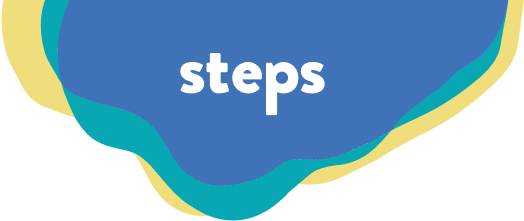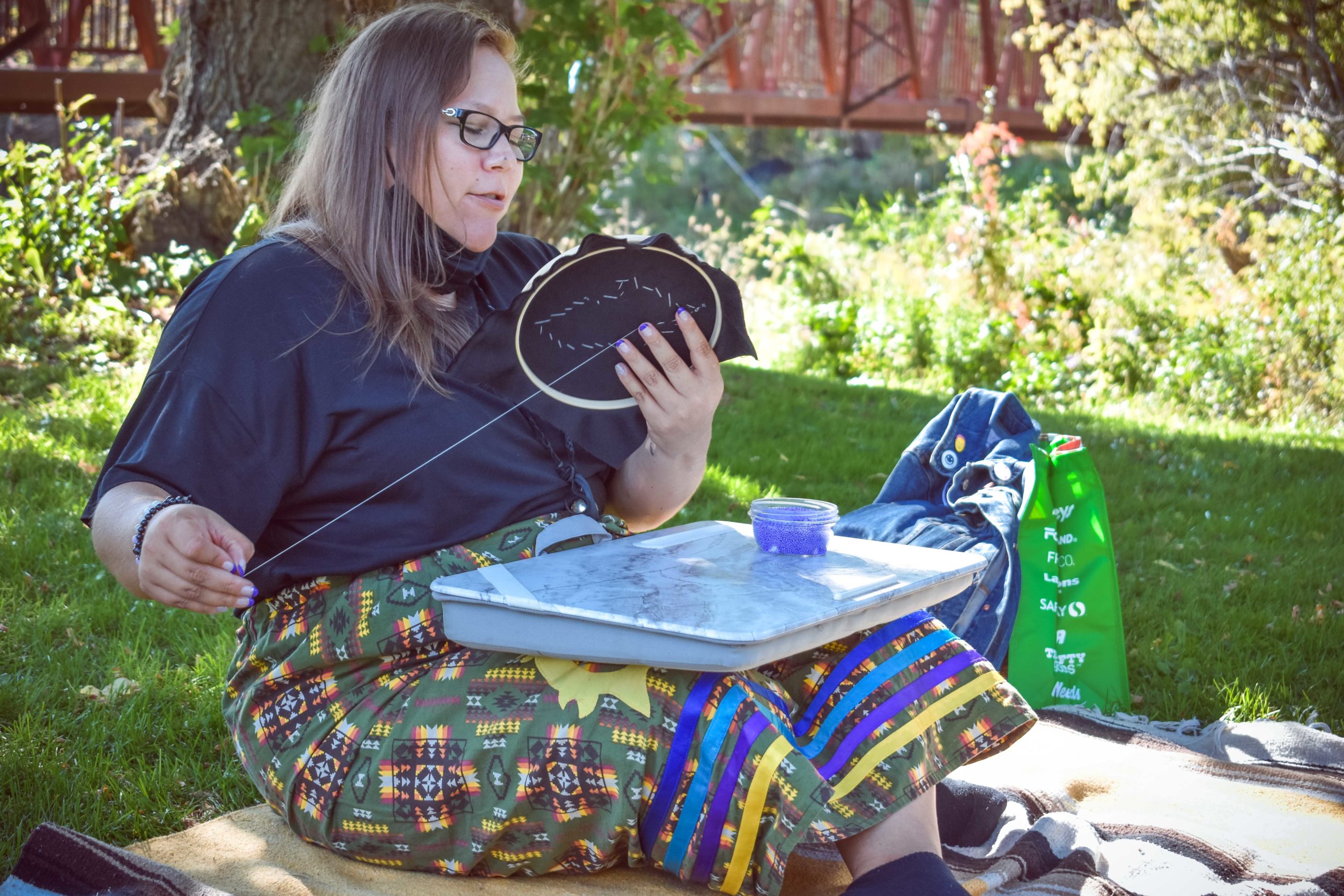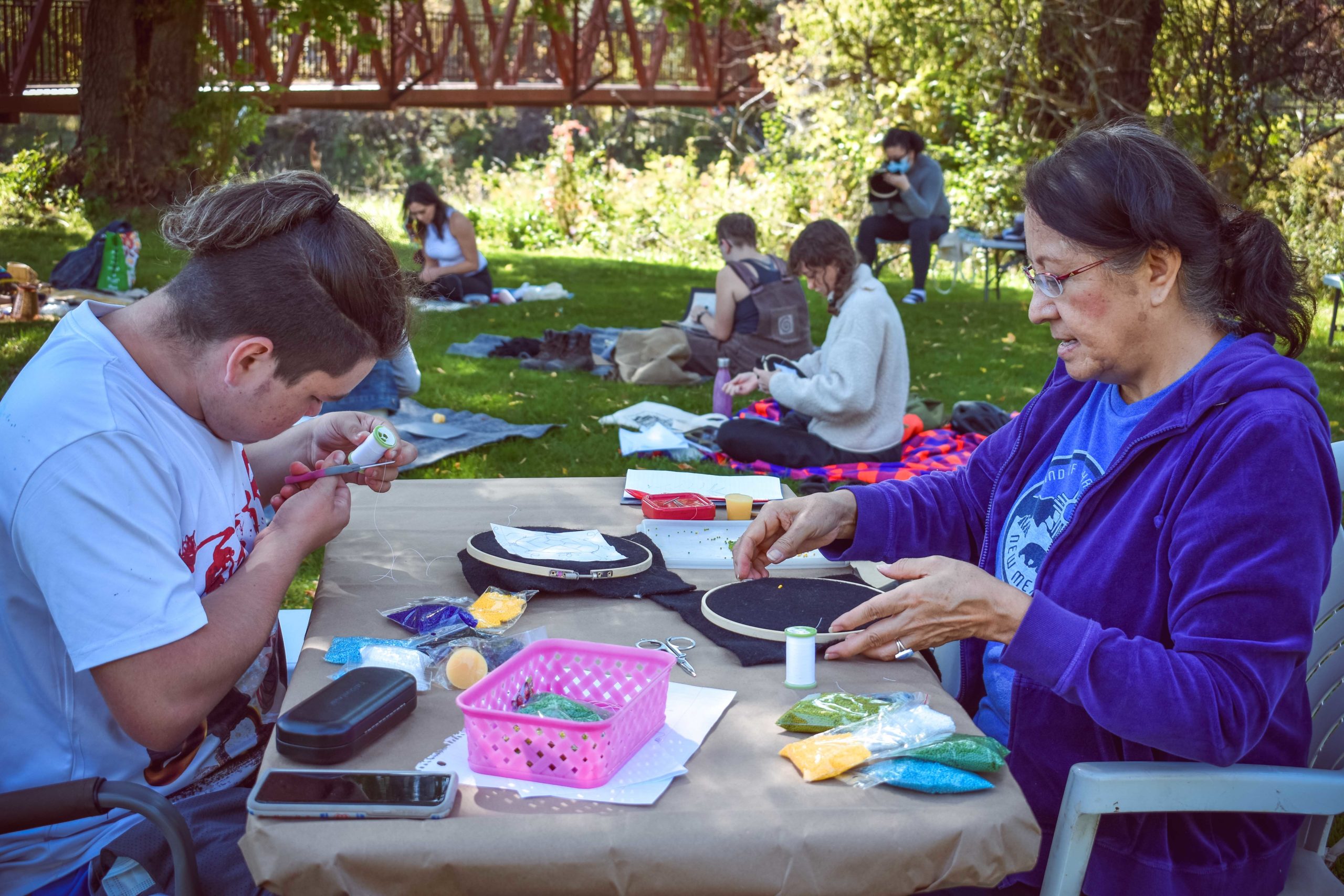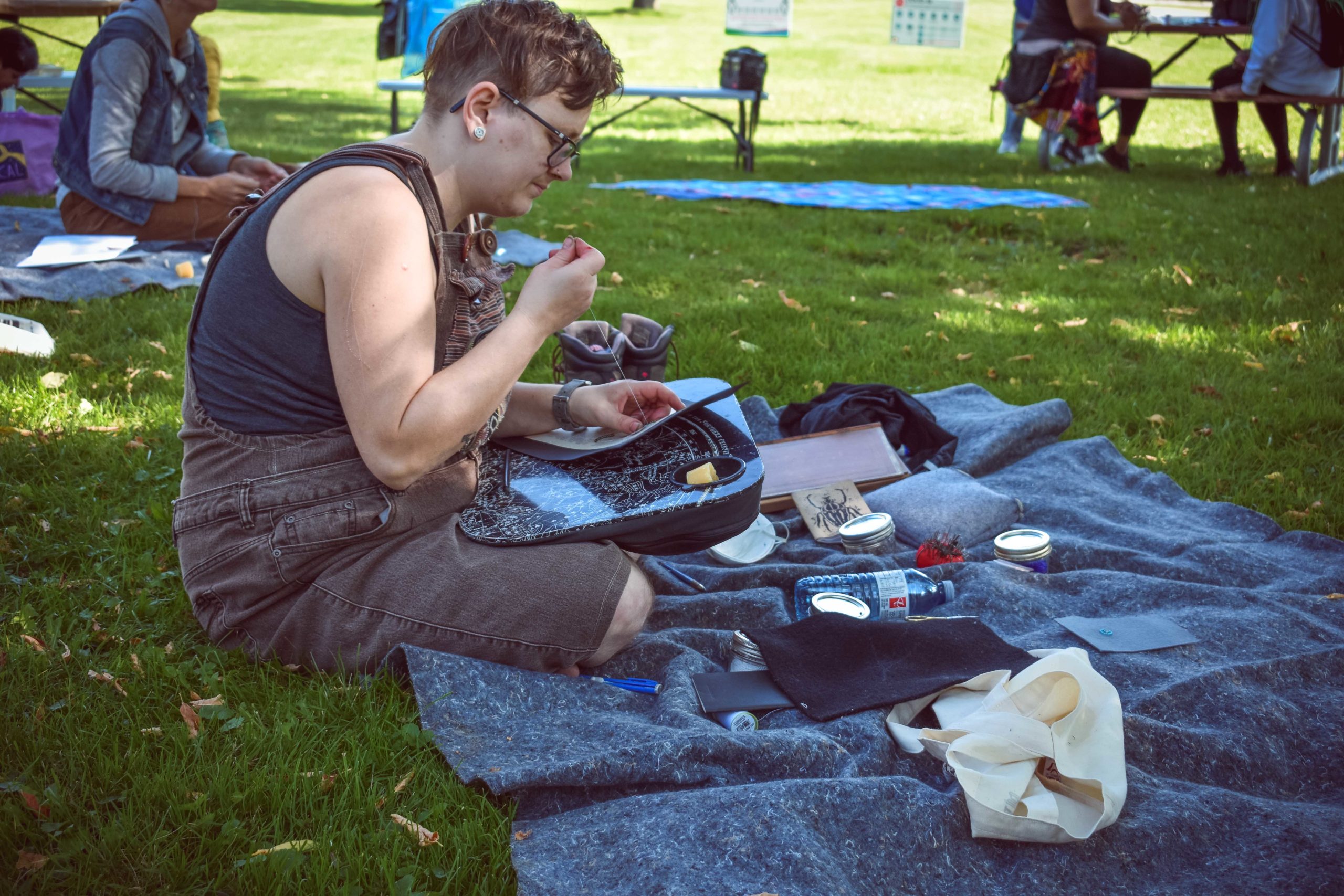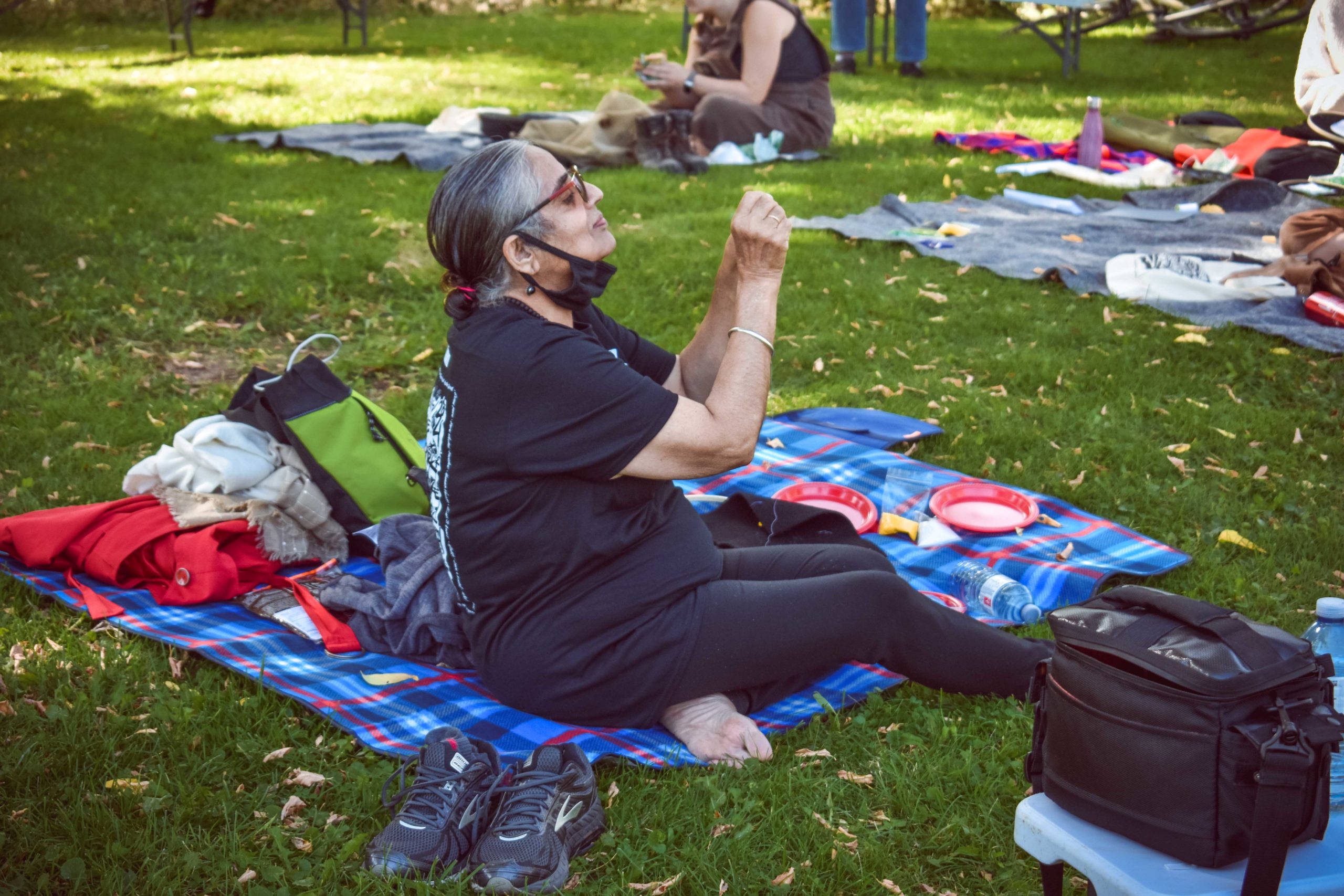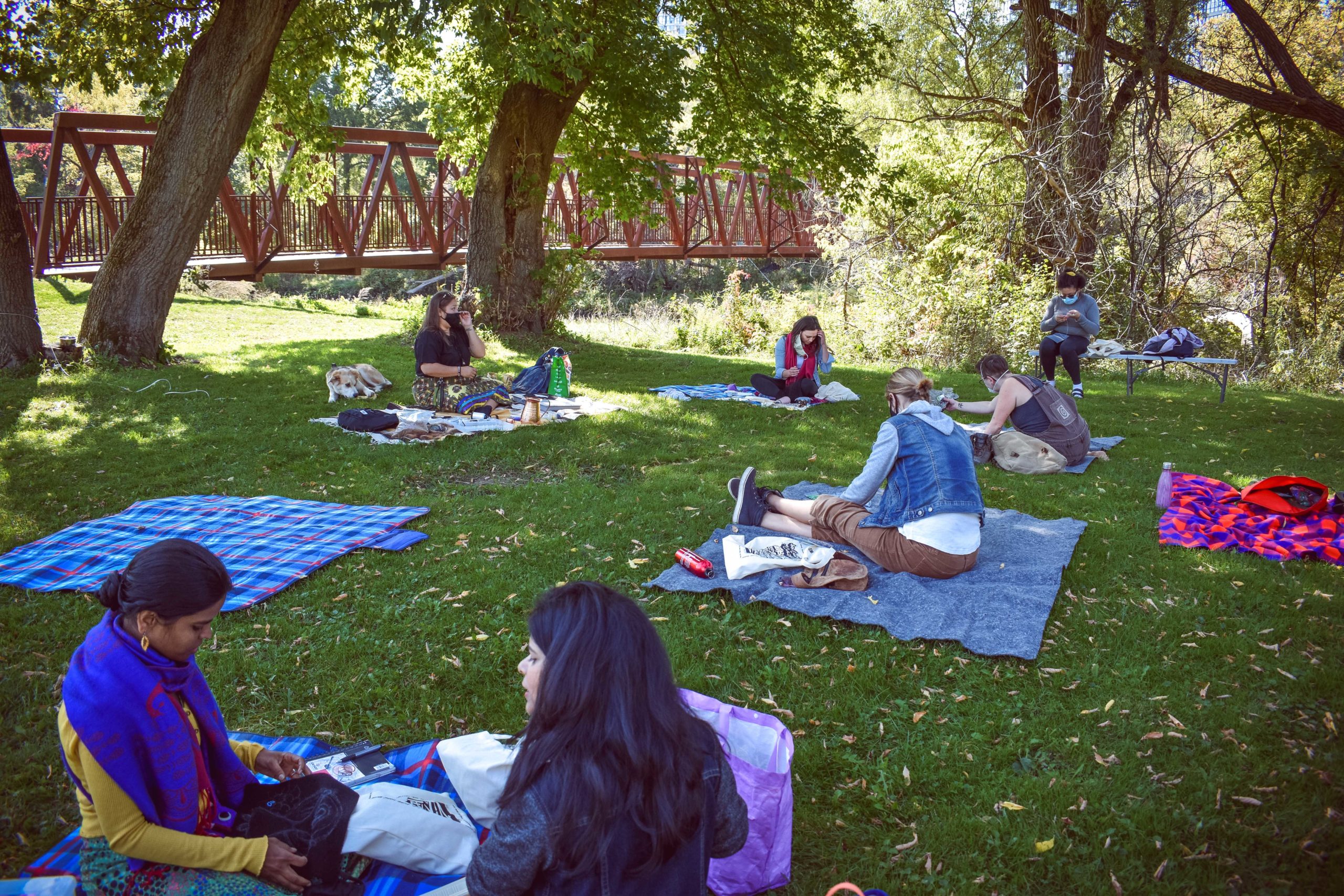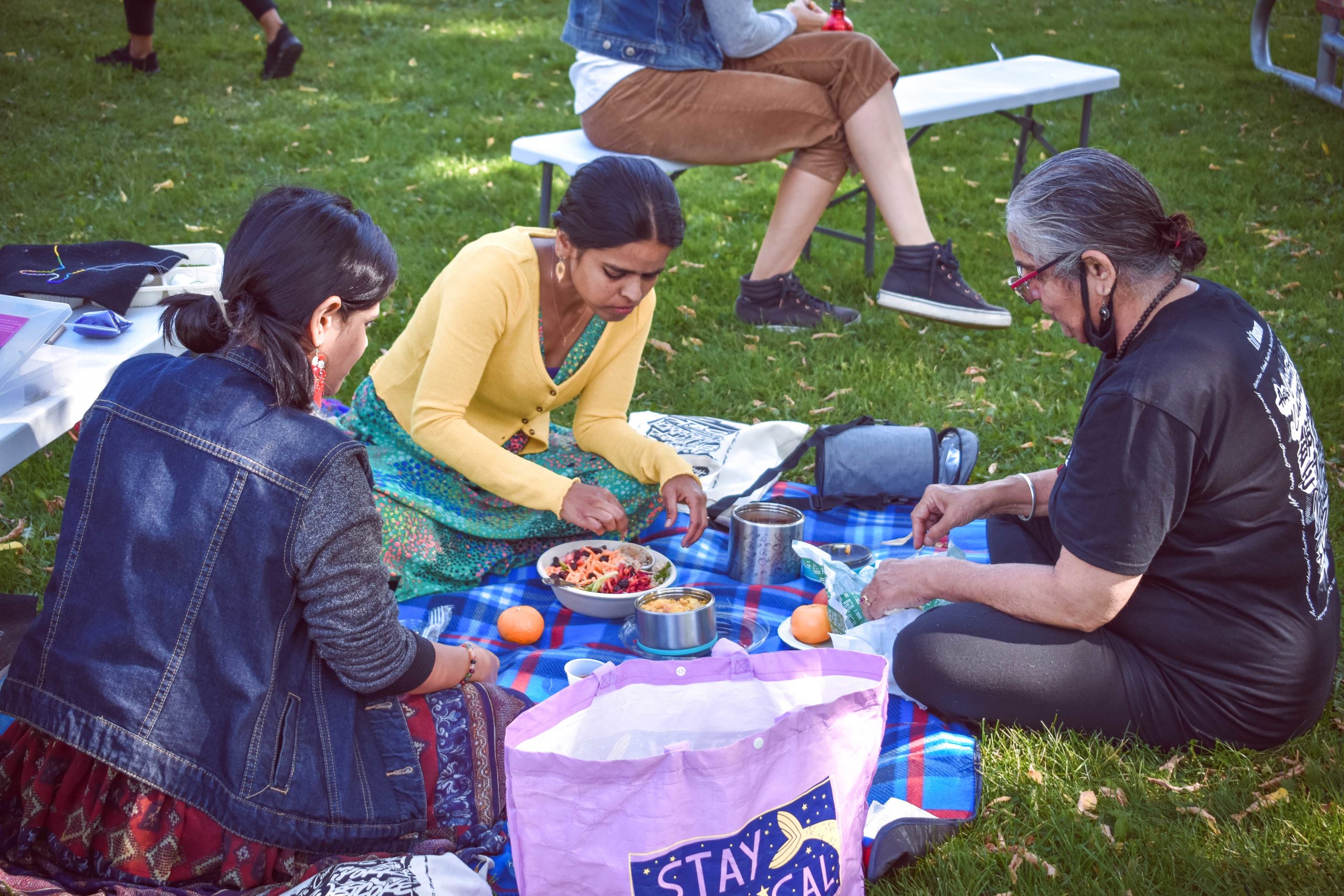A STEPS COMMUNITY ART TORONTO PROJECT
Restoration of Relationship is a project as part of the 2021 and 2022 From Weeds We Grow program, that features a Water Teaching by Kanate’hson, Elder Renee Thomas-Hill and two in-person beading circles on the banks of the Humber River led by Lindsey Lickers, Mushkiiki Nibi Kwe (Medicine Water Woman).
Quick Navigation
Location: Rowntree Mills Park, Humber Summit, Toronto
Artist: Lindsey Lickers, Mushkiiki Nibi Kwe
Year: 2021, 2022
Project Photographer/Videographer: Mila Bright, Samantha Beltran
Services: Artist Capacity Building, Creative Placemaking
37
workshop participants
35
one-of-a-kind handcrafted beadworks
5
in-park beading and sharing circles
1
water teachings session
1
collective community tapestry
Gä•sweñta’: Two Row Wampum
Led by Artist Lindsey Lickers, Mushkiiki Nibi Kwe (Medicine Water Woman), this arts workshop took place in Rowntree Mills Park where it created a space for 18 participants to be a part of a reflective and creative exercise to dive deeper into their current relationships themselves and the land as treaty people. Filled with sunshine and the lush surroundings of the park, the community formed a beading circle where they discussed the significance of the Two Row Wampum and how they implement the values of this treaty into their daily lives, with the day culminating with the creation of a beaded pin.
Contributing to the bundle
The beading workshop took place along the Humber River in Rowntree Mills Park, where they reflected on their individual relationships with the environment and explored the importance of our local waterways. These reflections, combined with the Water Teachings shared by elder Renee Thomas-Hill, inspired the creation of personalized beaded artworks.
– Lindsey Lickers, Mushkiiki Nibi Kwe, Artist Facilitator
WATER teachings
Community members came together in a virtual space for an evening of teachings about the significance of water, led by artist Lindsey Lickers, Mushkiiki Nibi Kwe and Kanate’hson, Elder Renee Thomas-Hill. Participants were immersed in teachings on how to care for water to help shape our connections and commitments to the land.
– Kanate’hson, Elder Renee Thomas-Hill
Explore the virtual exhibit below by hovering over the gallery images and clicking the arrows to view each participant’s work!
Albion Exhibit
Following the beading circle, workshop participants submitted their completed beaded artworks for inclusion in an in-person exhibit at Albion Library. The pieces were stitched together and displayed as a collective community tapestry, reflecting the shared teachings and commitment to deepening relationships with the environment and local waterways.
– Workshop Participant

ABOUT the facilitators
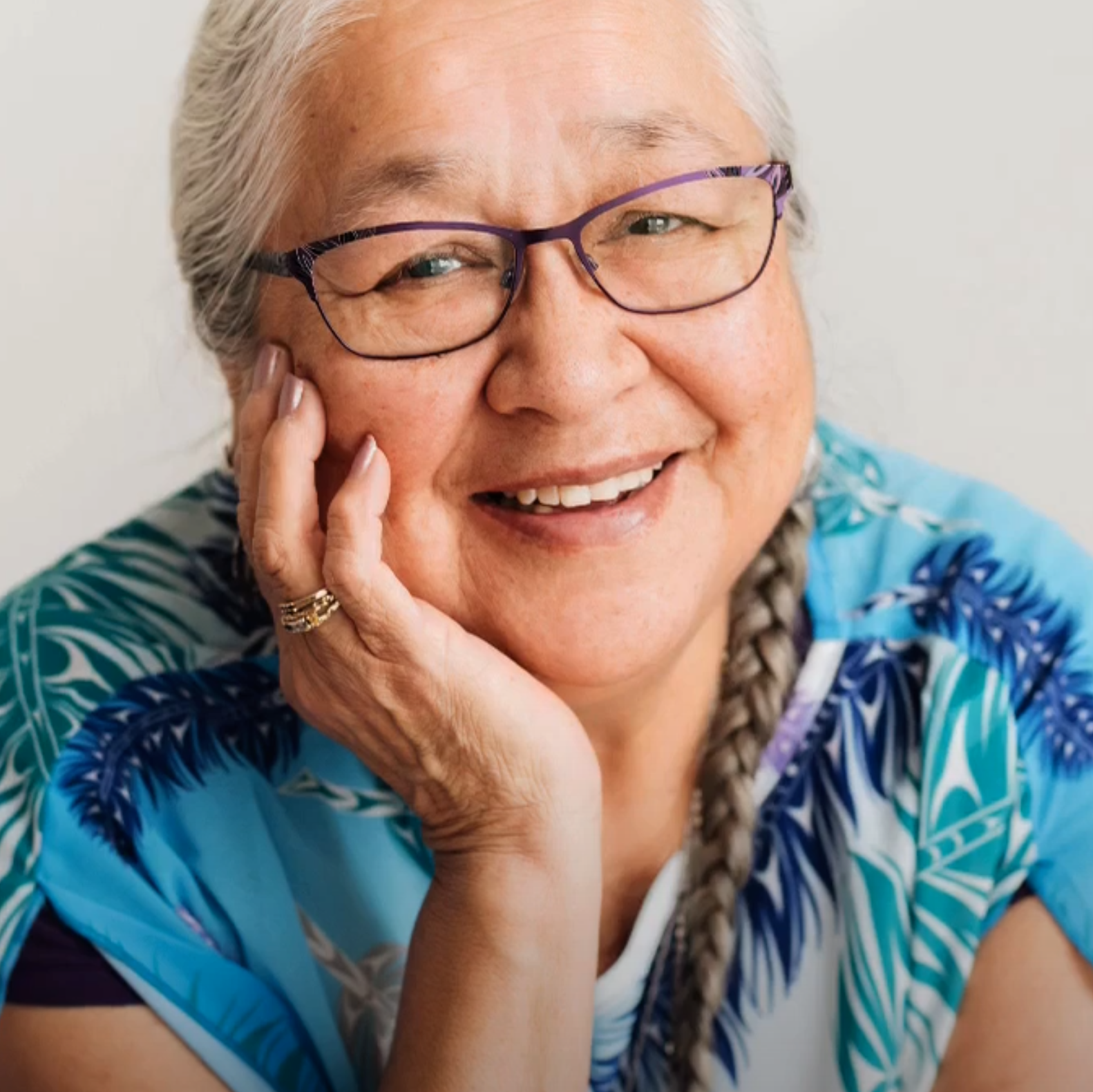
Kanate’hson, Elder Renee Thomas-Hill
Water Teachings Facilitator
Kanate’hson, Elder Renee Thomas-Hill was born into the Haudenosaunee Confederacy of the Grand River Territory. She honours her lineage, Mother – Cayuga Bear and that of her Father – Mohawk Turtle. As a Haudenosaunee woman, her role in life is a Carrier of our Heritage.
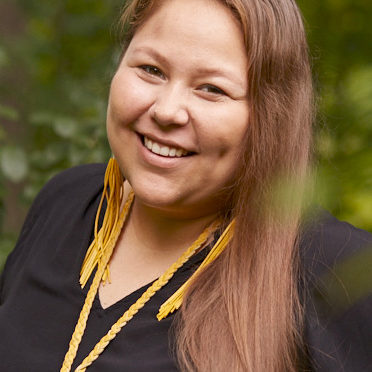
Lindsey Lickers, Mushkiiki Nibi Kwe
Beading Workshop Facilitator
Lindsey Lickers, Mushkiiki Nibi (Medicine Water), is Turtle Clan originally from Six Nations of the Grand River, with matriarchal ties to the Mississauga’s of Credit First Nation. She has been a practicing artist specializing in painting, beading and community arts facilitation going on fifteen years. In 2019, Lindsey was awarded an International Women’s Day Award (City of Toronto) recognizing her unique synthesis of public art, Indigenous women’s issues and governance.
Learn More About From Weeds We Grow
Acknowledgements and Project Partners

Our Creative Placemaking Service is a limited pro-bono consulting service for municipalities, Business Improvement Areas (BIAs), community and nonprofit organizations or businesses. We can help you brainstorm solutions to public space challenges, transform spaces to meet the changing needs of your community, and engage with artists and community members through creative projects.
Our Cultural Planning Service contributes to the well-being of communities and fosters sense of belonging in local economies. We can help you with cultural master planning, community arts program design, public consultations and more.
